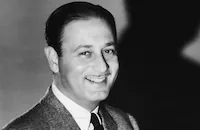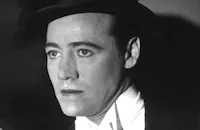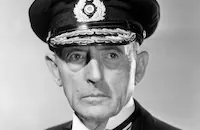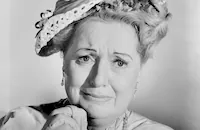The Casino Murder Case

Brief Synopsis
Cast & Crew
Edwin L. Marin
Paul Lukas
Alison Skipworth
Donald Cook
Rosalind Russell
Arthur Byron
Film Details
Technical Specs

Synopsis
Gentleman detective Philo Vance begins an investigation when he receives an anonymous letter stating that society man Lynn Llewellyn will be in danger when he appears at the casino owned by his uncle, Kinkaid. Vance visits the Llewellyn estate, which is run by Mrs. Priscilla Kinkaid-Llewellyn, the matriarch of the household, and stumbles into one of the family's many quarrels. At the end of the bitter quarrel, which involves Mrs. Llewellyn's son Lynn and his wife Virginia, Virginia announces that she has decided to leave the house and go to Chicago. During the tiff, Vance and Doris, Mrs. Llewellyn's secretary, are introduced to each other and Doris immediately takes a liking to Vance. Vance takes Doris to his home, where he and District Attorney Markham show her the mysterious letter. Doris immediately recognizes the return address as being that of the Llewellyn's townhouse in Closter and notices that the letter was typed on her typewriter. Vance assigns Sergeant Heath to help stake out the casino that night, but their presence does not prevent Lynn from suddenly collapsing at the card table. At the same time, Doris informs Vance that Virginia has died at the Llewellyn house. Markham begins his investigation of the murder by questioning Mrs. Llewellyn, who recalls having quarrelled with Virginia before she was poisoned, and Amelia, Mrs. Llewellyn's daughter, who admits that she too had a spat with Virginia. Meanwhile, Doris finds Mrs. Llewellyn's recently altered will, in which she disinherited Kinkaid, making it apparent that Lynn and Amelia would be the only ones who would benefit from Mrs. Llewellyn's death. Other clues begin to surface, including Kinkaid's unusual collection of books on chemistry and poisons, and a loaded gun found in Virginia's bedroom. Soon after Lynn's recovery, Mrs. Llewellyn is found dead of an apparent suicide with a note, bearing her signature, in which she confesses to Virginia's murder. Not convinced that the mystery has been solved, Vance pursues his theory that Mrs. Llewellyn may have been poisoned by heavy water, which leads him to Kinkaid's secret laboratory, where he and Doris are being held at gunpoint by Kinkaid. Vance and Doris escape, but Vance does not believe that Kinkaid is the murderer, thinking instead that he is merely one of many decoys set up by the real killer to lead the investigation astray. The real killer turns out to be Lynn, who has lured Vance and Doris to the Closter townhouse to kill them. But before Lynn completes his "perfect crime," Vance reads from a letter he wrote earlier in which he detailed his theory about the killings. In it, Vance names Lynn as the murderer, calling him a rich, egomaniacal weakling, who, being tired of his wife, poisoned her and threw the blame on his uncle, whom he despised. After hearing Vance's summary of the murder plot, Lynn tells his captors that he has arranged to pin Vance and Doris' forthcoming murder on Kinkaid. However, when Lynn shoots Vance, Heath and others emerge from behind a door where they have been recording Lynn's confession and arrest him. After thanking Becky, Mrs. Llewellyn's maid, for loading Lynn's gun with blanks, Vance resumes his romance with Doris.

Director

Edwin L. Marin
Cast

Paul Lukas

Alison Skipworth

Donald Cook

Rosalind Russell

Arthur Byron

Ted Healy

Eric Blore

Isabel Jewell

Louise Fazenda
Purnell B. Pratt

Leslie Fenton
Louise Henry

Leo Carroll

Charles Sellon

William Demarest
Grace Hayle
Wallis Clark
Ernie Adams
William Worthington
Jay Eaton
Lillian Elliott
Pinky Parker
Milton Kibbee
Tom Herbert

Frank Reicher

Keye Luke
Mike Morita
Edna Bennett

Lee Patrick
Gene Perry
Pat Flaherty

Edward Van Sloan
Crew
A. W. Brown
Charles [g.] Clarke
Cedric Gibbons
Lucien Hubbard
Thomas Long
Kyme Meade
Conrad A. Nervig
Florence Ryerson
Douglas Shearer
Harkness Smith
Ralph Spence
Dimitri Tiomkin
Dolly Tree
Edwin B. Willis
Edgar Allan Woolf
Joseph Wright

Videos
Trailer
Hosted Intro
Film Details
Technical Specs

Articles
The Casino Murder Case
The story finds Vance at the home of the eccentric dowager Priscilla Kinkaid Llewellyn (Alison Skipworth), lured there by an unsigned letter promising harm to the members of the Kinkaid family. The threats soon turn out to be more than merely empty; Mrs. Llewellyn's gambler son Lynn (Donald Cook) mysteriously collapses on a casino floor, while his actress wife Virginia (Louise Henry) is similarly, albeit fatally, stricken across town. Both appear to be poisonings, but neither incident was marked by opportunity.
When Lynn's sister Amelia (Isabel Jewell) is similarly attacked, Vance finds himself in a race against time to uncover the poisoner and his - or her - methods. Aiding the cause in varying degrees are his patient valet Currie (Eric Blore), the flighty but intrigued socialite Doris Reed (Rosalind Russell), and the behind-the-curve police presence, Sergeant Heath (played by ex-Three Stooges honcho Ted Healy).
Lukas' overbearingly cerebral take on the role was certainly fitting, but may have been off-putting; MGM turned to Edmund Lowe for the studio's final Vance adaptation, The Garden Murder Case (1936). Lukas' subsequent career found him mostly typed to heavies until his sympathetic turn as the German expatriate hounded by Nazis in Watch on the Rhine (1943) earned him the Best Actor Oscar®.
In an early role as the meddlesome Doris, Russell had some opportunity to show off her comedic prowess, and acquitted herself pretty well. Still, the project was far from a source of pride for the actress, and she completely dismissed it in her memoir Life Is a Banquet. "The first lead I played at Metro--it was forced on me, I went down hollering--was in a B movie called Casino Murder Case, with Paul Lukas. It was so bad, and I was so bad in it, that it gave my maid Hazel ammunition for seasons to come. 'If you don't behave,' she'd say, 'I'm going to tell people about that Casino Murder Case.'"
Producer: Lucien Hubbard
Director: Edwin L. Marin
Screenplay: Florence Ryerson, Edgar Allan Woolf, S.S. Van Dine (book)
Cinematography: Charles Clarke
Film Editing: Conrad A. Nervig
Art Direction: Cedric Gibbons
Music: Dimitri Tiomkin
Cast: Paul Lukas (Philo Vance), Alison Skipworth (Priscilla Kinkaid Llewellyn), Donald Cook (Lynn Llewellyn), Rosalind Russell (Doris Reed), Arthur Byron (Richard Kinkaid), Ted Healy (Sergeant Ernest Heath).
BW-83m. Closed captioning.
by Jay S. Steinberg

The Casino Murder Case
Quotes
Trivia
Notes
This film was the ninth in the Philo Vance murder-mystery series. According to contemporary sources, M-G-M originally planned this picture as a Myrna Loy and William Powell "starrer," but Powell refused the assignment, announcing that he was tired of playing Philo Vance. Hollywood Reporter pre-production news items noted that after M-G-M dropped plans to cast Otto Kruger in the lead, the studio began negotiations with Columbia to borrow Fred Keating for the part. Following this, a Daily Variety pre-production news item indicated that the studio had failed in its negotiations for Warren William to play the lead, and that Ricardo Cortez was likley to get the part. Two weeks prior to the commencement of production, Hollywood Reporter announced that Paul Lukas and Edward Brophy had been set to take over the male leads from William Powell and Eugene Pallette respectively. Brophy was later replaced by Ted Healy. Another Hollywood Reporter pre-production news item noted that Alison Skipworth was borrowed from Paramount to play the part of Mrs. Llewellyn, which was originally set for Constance Collier. Collier reportedly decided to back out of the production because her role in Shadow of a Doubt (see below) was too similar to that of "Mrs. Llewellyn," and because production on that film would end too late for her to break between films.
In her autobiography, Rosalind Russell is quoted as saying that The Casino Murder Case was "so bad, and I was so bad in it." For more information on the films featuring the "Philo Vance" character, consult the Series Index and for The Kennel Murder Case.
















